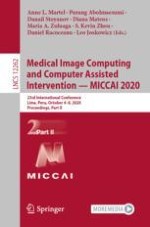2020 | OriginalPaper | Buchkapitel
Preoperative Prediction of Lymph Node Metastasis from Clinical DCE MRI of the Primary Breast Tumor Using a 4D CNN
verfasst von : Son Nguyen, Dogan Polat, Paniz Karbasi, Daniel Moser, Liqiang Wang, Keith Hulsey, Murat Can Çobanoğlu, Basak Dogan, Albert Montillo
Erschienen in: Medical Image Computing and Computer Assisted Intervention – MICCAI 2020
Aktivieren Sie unsere intelligente Suche, um passende Fachinhalte oder Patente zu finden.
Wählen Sie Textabschnitte aus um mit Künstlicher Intelligenz passenden Patente zu finden. powered by
Markieren Sie Textabschnitte, um KI-gestützt weitere passende Inhalte zu finden. powered by
